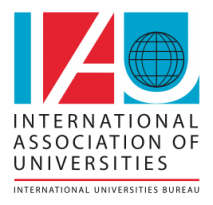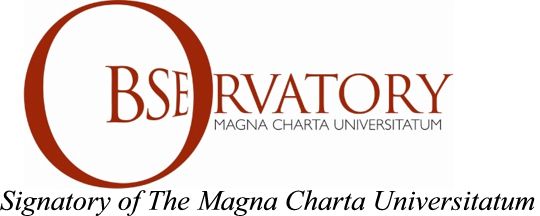Our university actively promotes interdisciplinary research as a strategic priority in its scientific and educational mission.
Recognizing that today’s global challenges — such as climate change, public health crises, energy transition, post-conflict recovery, and technological transformation — require solutions that transcend traditional disciplinary boundaries, we have established a strong institutional framework that supports cross-disciplinary collaboration based on the principles of sustainable development.
Interdisciplinary research at our university brings together experts from diverse fields — including engineering, urban studies, healthcare, information technology, environmental science, and economics — to work on projects that deliver tangible societal and technological impact. These efforts are supported through targeted research programs, internal performance evaluation mechanisms, and active participation in national and international scientific networks.
The following flagship projects implemented in 2023 exemplify our commitment to interdisciplinary excellence and our contribution to the global research community.
In 2023, the university implemented mechanisms for assessing the success of interdisciplinary research within relevant disciplines. These indicators are integrated into the academic performance evaluation system, in particular through the internal academic staff rating system, which is embedded in the university’s corporate ERP platform. This system includes both quantitative and qualitative indicators that allow the institution to record and evaluate the outcomes of interdisciplinary scientific collaboration.
The university conducted three interdisciplinary research projects:
Project 1: Logistics Recovery Mechanisms for Post-Conflict Areas based on integrated transport planning
Fields involved: Urban Studies, Transport Planning, IT, Mobility, Public Policy
Key outputs: Publications in Springer (Scopus), national journals, international proceedings
Summary: Focuses on developing logistics and public transit solutions for post-conflict urban areas using integrated transport models.
Selected publications:
1. Ponkratov, D., Davidich, Y., Kopytkov, D., Samchuk, G., Kush, Y. (2023). Public Transit Crowding Estimation Indicator: Comparative Analysis, Conditions of Application, Interaction. In: Arsenyeva, O. et al. (Eds.), Smart Technologies in Urban Engineering, Lecture Notes in Networks and Systems, Vol. 536, Springer, Cham, pp. 764–774.
2. Davidich, Y.O., Galkin, A.S., Ponkratov, D.P., Kush, Y.I., Samchuk, G.O. (2023). Determination of logistic parameters of e-cargo bikes for sustainable urban parcel delivery. Municipal Economy of Cities, Vol. 4(178), pp. 304–312.
3. Galkin, A. (2023). Engineering resilience last-mile delivery methods using crowdshipping in Bratislava and Kharkiv. In: Digital Innovations in the Socio-Economic Sphere, Akademia Śląska, pp. 275–297.
DOI: 10.54264/M024
Project 2: Electrotechnical Complex for Energy-Efficient Processing Technologies of processing dispersed and viscous substances based on multifunctional energy converter
Fields involved: Electrical Engineering, Digital Modelling, Materials Science
Key outputs: 10+ international publications, including Springer LNNS series
Summary: Development of energy-efficient electromechanical systems using simulation tools such as ANSYS Twin Builder and RMxprt.
Selected publications:
1. Pliuhin, V., Zaklinskyy, S., Plankovskyy, S., Tsegelnyk, Y., Aksonov, O., Kombarov, V. (2023). A Digital Twin Design of Induction Motor with Squirrel-Cage Rotor for Insulation Condition Prediction. International Journal of Mechatronics and Applied Mechanics, Issue 14, pp. 185–191.
2. Pliuhin, V., Zablodskiy, M., Sukhonos, M., Tsegelnyk, Y., Piddubna, L. (2023). Determination of Massive Rotary Electric Machines Parameters in ANSYS. In: Smart Technologies in Urban Engineering, LNNS, Vol. 536, Springer.
3. Pliuhin, V., Tsegelnyk, Y., Plankovskyy, S., Aksonov, O., Kombarov, V. (2023). Implementation of Induction Motor Speed and Torque Control System in ANSYS Twin Builder. In: ICoRSE 2023, LNNS, Vol. 762, Springer, pp. 514–531.
Project 3: Development of screening System for Early Diagnosis of Cardiovascular Diseases and COVID-19 based on rheographic method
Fields involved: Biomedical Engineering, Physiology, Digital Signal Analysis
Key outputs: Multiple patent applications and scientific publications
Summary: Development of novel diagnostic methods based on rheographic signal analysis to assess vascular health and endothelial function.
Selected publications and patents:
1. Sergieiev, V., Kulbashevska, T., Biletskyi, I., Pavlenko, P., Tomilin, O. (2023). Rheographic Evaluation of Endothelium Regulation of Vascular Tone. In: Smart Technologies in Urban Engineering, LNNS, Vol. 807, Springer.
2. Biletskyi, I.V., Kulbashevska, T.V., Plankovskyi, S.I., Sergieiev, V.H. (2023). Method for measuring arterial pressure and determining arterial elasticity. Utility Model Patent No. 153901.
3. Pavlenko, P.O., Plankovskyi, S.I., Sergieiev, V.H., Tsegelnyk, Y.V. (2023). Method for determining endothelial function of arterial vessels. Utility Model Application u202304468.
Conclusion
The success of these interdisciplinary initiatives is reflected through:
- publications in international and interdisciplinary journals;
- participation in international scientific forums;
- patent activity and protection of intellectual property;
- collaborative work among researchers from different scientific domains;
- integration of research outcomes into real-world applications and educational programs.
These achievements are considered in staff performance evaluations, academic promotion, and institutional strategic planning, reaffirming the university’s commitment to interdisciplinary excellence.




